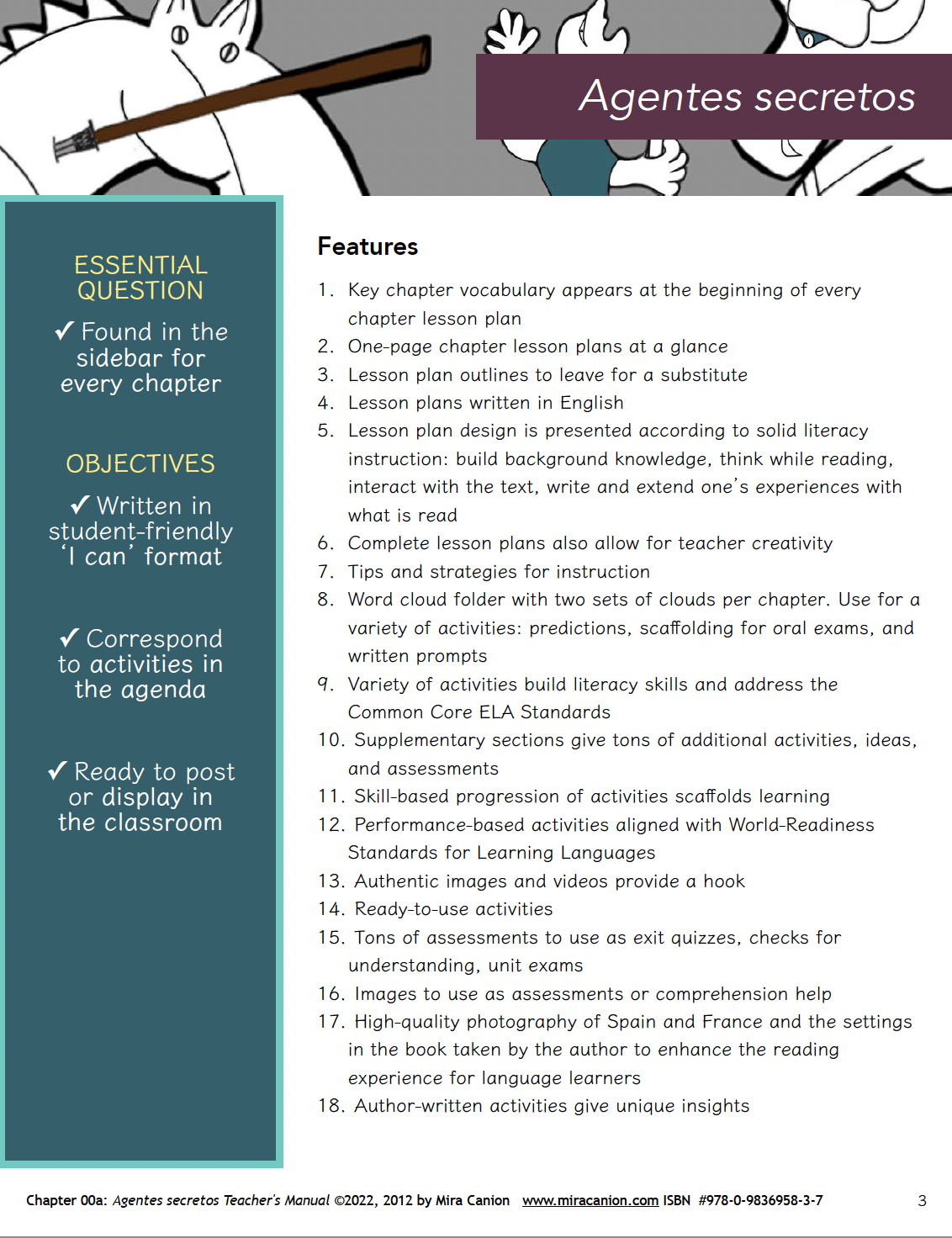Alignment to ACTFL World-Readiness Standards
Mira’s books belong to the category of language learner literature. They are designed in a similar way to easy-to-read books for English literacy. When teachers and students read Mira’s books and intentionally incorporate the strategies and activities in the teacher’s manuals, they are supporting the lifelong practices of reading, writing, speaking and listening in Spanish. In short, they are supporting literacy standards.
Some of the World-Readiness Standards for Learning Languages that align to Mira’s books and materials include:
“Interpretive Communication: Learners understand, interpret, and analyze what is heard, read, or viewed on a variety of topics.”
“Interpersonal Communication: Learners interact and negotiate meaning in spoken, signed, or written conversations to share information, reactions, feelings, and opinions.”
“Presentational Communication: Learners present information, concepts, and ideas to inform, explain, persuade, and narrate on a variety of topics using appropriate media and adapting to various audiences of listeners, readers, or viewers.”
“Relating Cultural Practices to Perspectives: Learners use the language to investigate, explain, and reflect on the relationship between the practices and perspectives of the cultures studied.”
“Relating Cultural Products to Perspectives: Learners use the language to investigate, explain, and reflect on the relationship between the products and perspectives of the cultures studied.”
“Cultural Comparisons: Learners use the language to investigate, explain, and reflect on the concept of culture through comparisons of the cultures studied and their own.”
“Making Connections: Learners build, reinforce, and expand their knowledge of other disciplines while using the language to develop critical thinking and to solve problems creatively.”
“Making Connections: Acquiring Information and Diverse Perspectives: Learners access and evaluate information and diverse perspectives that are available through the language and its cultures.”

Teacher’s Manual Features
- Key chapter vocabulary appears at the beginning of every chapter lesson plan
- One-page chapter lesson plans at a glance
- Lesson plan outlines to leave for a substitute
- Lesson plans written in English
- Lesson plan design is presented according to solid literacy instruction: build background knowledge, think while reading, interact with the text, write and extend one’s experiences with what is read
- Complete lesson plans also allow for teacher creativity
- Tips and strategies for instruction
- Word clouds for each chapter. Use for a variety of activities: predictions, scaffolding for oral exams, and written prompts
- Variety of activities build literacy skills and address the Common Core ELA Standards
- Supplementary sections give tons of additional activities, ideas, and assessments
- Skill-based progression of activities scaffolds learning
- Performance-based activities aligned with World-Readiness Standards for Learning Languages
- Authentic images and videos provide a hook
- Ready-to-use activities
- Tons of assessments to use as exit quizzes, checks for understanding, unit exams
- Images to use as assessments or comprehension help
- High-quality photography of the settings in the book taken by the author to enhance the reading experience for language learners
- Author-written activities give unique insights

